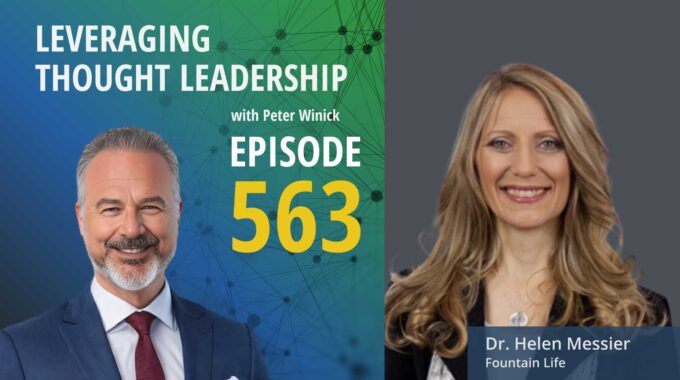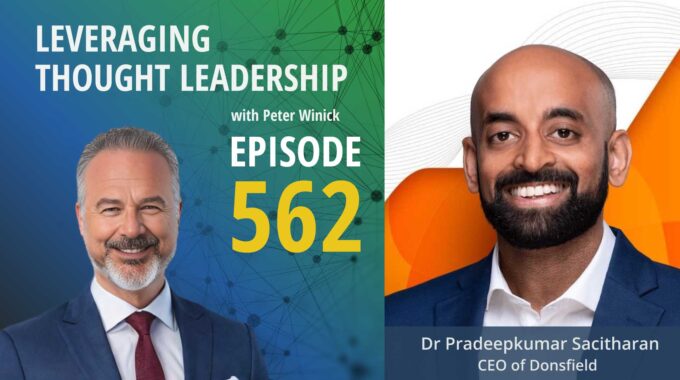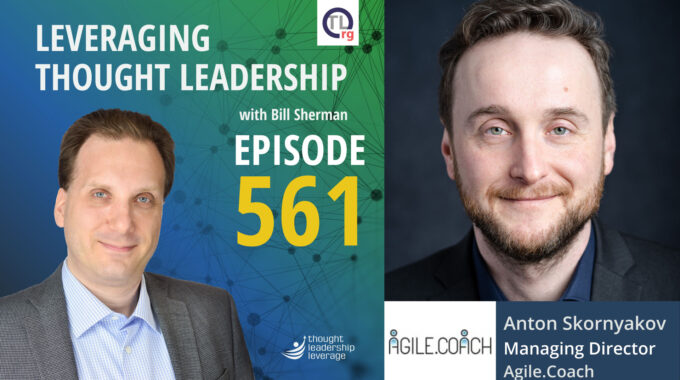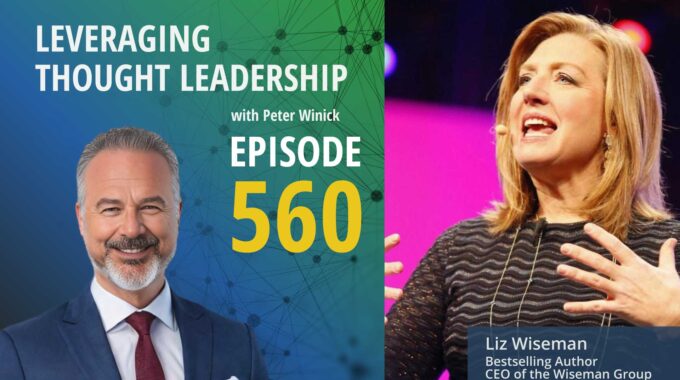Strategies for Shaping the Future of Healthcare A conversation with Dr. Helen Messier about what…
Assessment Tools for Changing Habits | Meredith Bell
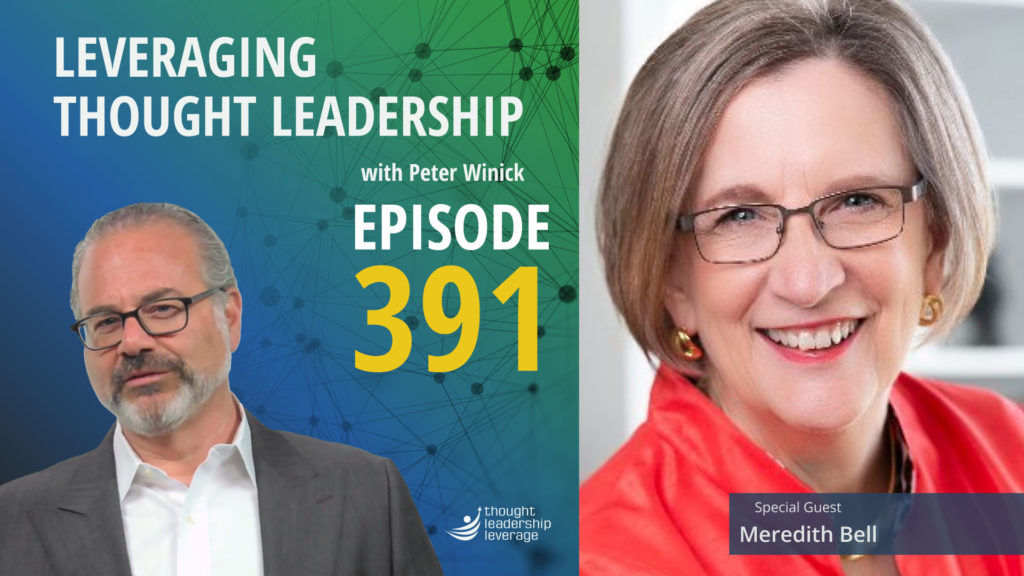
Creating and Deploying Effective Assessment Tools.
An interview with Meredith Bell about creating 20/20 Insights and how the assessment grew a business.
Many organizations deploy assessment tools, only to have the results ignored because of a lack of understanding or motivation. What do we do with them, now? What do the numbers really mean?
Our guest today will help us understand not only what it takes to build a valid assessment, but how to use one to drive measurable behavior change. Meredith Bell is the co-founder and president of Grow Strong Leaders, where they help individuals discover key areas for development, and implement strategies for achieving higher levels of performance. She is also the co-author of Connect with Your Team: Mastering the Top 10 Communication Skills and Peer Coaching Made Simple: How to Do the 6 Things That Matter Most When Helping Someone Improve a Skill. Meredith started her journey into the assessment tool space in the 90s, when she became frustrated at the lack of customizable tools at her disposal as a consultant. Before long, she had made the pivot from consulting to software creation. Her original product, 20/20 Insight, is still in use today.
In addition to having been a consultant and creating assessment tools, Meredith is also an author, speaker, and thought leader. With so many plates spinning, she knows well how each label factor creates multiple touchpoints for potential clients to utilize her expertise. From those touchpoints, she helps companies and organizations discover which of her offerings will have the most impact for their needs.
If you’re looking for an in-depth understanding of assessment functionality, and why peer-to-peer coaching can be the most cost and time-effective method for moving the performance needle, you’ll want to listen to this episode.
Three Key Takeaways:
- When creating assessments, keep your questions indirect. Indirect questions create more connection between behaviors and other elements.
- Helping people reach their full potential is all about changing the habits that are standing in their own way.
- Effective communication often means having to ask, “Who do I need to be, in this moment, in order to connect with my audience?”
If you need a strategy to bring your thought leadership to market, Thought Leadership Leverage can assist you! Contact us for more information. In addition, we can help you implement marketing, research, and sales. Let us help you so you can devote yourself to what you do best.
Listen on Apple Podcasts or Google Podcasts!
Transcript
Peter Winick And welcome, welcome, welcome. This is Peter Winick. I’m the founder and CEO at Thought Leadership Leverage and you’re joining us on our podcast, which is Leveraging Thought Leadership today. My guest is Meredith Bell. I’m excited to talk to Meredith today. She’s an author, she’s a speaker and she produces a lot of assessment tools. She’s the co-founder and the president of Grow Strong Leaders. She’s the author of two books, Connect with Your Team and Pure Coaching made simple. She’s been a speaker forever and she does a lot in the assessment tool space, which is where we’re going to spend some time talking today. So without further ado, welcome, Meredith. Thanks for joining us.
Meredith Bell Oh, it’s great to be here with you, Peter. I’m looking forward to our conversation.
Peter Winick So I want to talk a little bit about assessment tools because I am an assessment tool fan, you know, nerd, geek, whatever. And the reason is well, there’s a couple of reasons. One is it’s an asset you get to build, wants and use over and over and over and over again. And people love to see either at the individual level, the team level, the org level, some measurement of something to ground a conversation in an objective manner. So, yeah, tell me about that.
Meredith Bell Well, this adventure into assessment started back in the early nineties when my business partner and I were doing consulting work and we wanted to use a 3060 feedback tool. And back then there weren’t very many choices and they were all very expensive. And we had clients with all different economic means, and so we were frustrated that we couldn’t customize that too. So we decided to create our own and we did that, tested it with our clients and said, you know, this is something a lot of organizations are looking for. So we made a pivot from being a consulting firm to a software company in 1994 and have never looked back. Our original product, 2020 Insight, is still going strong and one of the things that people love about it is its customization capability consistently over the years. That’s what they talk about because all organizations are really different. And what makes Harris unique in a way is you can reassess at a period of time in the future and be able to compare scores.
Meredith Bell So, as you’re mentioning, exactly this idea of being able to tell, am I making any changes? Because we were frustrated too often. And I’m sure you’ve seen this too, where an organization will use an assessment tool, the person gets the information and then just sets it aside, puts it on their desk or throws it away.
Peter Winick And that’s when they don’t really know what it means or what to do with it. So unpack for us a little bit because, you know, we do a lot of this on our end helping our clients understand. But people often think like, oh, I’ve read strength. You know, I’ve read strength finders and took that. I can create something like that. It’ll take me a half a day, I can write up 12 questions and all that sort of stuff. So, you know, I always joke with clients like, listen, there’s the Cosmo quiz or the, you know, makeup counter of Bloomingdales. You’re a summer spring which has no basis in science or truth or whatever. The true test ultimately of an assessment tool is you’ll think about a ruler. It’s 12 inches period, end of conversation. It will always measure 12 inches. So, yes, you know, sort of at a high level, unpack for us what’s involved to really develop a true assessment tool that is valid and respected by experts.
Meredith Bell Yes. You know, that’s such an interesting question, Peter, because there’s a couple different layers to it. And one is related to are you asking indirectly about certain behaviors or elements that lead to a factor? For example, extroversion on something like the Myers-Briggs, none of the questions come out and say, are you extroverted right now? You’re giving sentences, right that have to be proven to relate to the factor that it says it’s measuring. So that is a different kind of assessment tool, what we found with ours, because we were simply assessing behavior. In other words, you’ve observed me in a listening mode. Am I listening or not? There’s no other factor that that has to connect to. It’s a direct observation.
Peter Winick So it’s an isolated piece based on a behavior. Yeah.
Meredith Bell Yes. And so the idea of validation when you’re looking at is this valid for an organization related to an assessment like 360 feedback? The question is, is this behavior important for our organization? And so is it really a valid question to ask? Because if it’s irrelevant and nobody’s doing that, whatever it is, there’s no need to ask it. Whereas another like a personality or a style assessment, those need to be really carefully researched, tested. You’ve got to make sure that you’ve got that high. Correlation between the question you’re asking and the factor you’re you’re attempting to.
Peter Winick And not to get too far down sort of the wonkiness of this because I happen to enjoy this stuff. You also have to be clear around what you’re claiming folks could use it for. So when you get into selection, meaning, yes, you know, I’m thinking of hiring Meredith. This is an assessment I’m going to put her through and it is going to be a criteria that influences my selecting her that comes with liability. Right. So that’s like sort of the highest standard. Now, it doesn’t mean that people don’t use it in that way. You know, I could I could buy a hammer at Home Depot and use it to attempt to screw in a screwdriver. It’s not smart, but it’s not the intended use. And they wouldn’t you know, the hammer company wouldn’t have a liability if that’s what I was trying to do. So I think you also have to be clear about what is used for. So, you know, you see you’ve been at the assessment side of this for a long time. Connect the dots for me, if you if you would, on writing, speaking all of the elements of your thought leadership, because the assessment is just one place to go but get sort of a holistic view and have.
Meredith Bell The whole the whole reason for us being really as a company and what I’m passionate about is helping people realize their full potential and change habits that are getting in the way of them being effective. And in particular, the big theme across everything we do is around communication skills. How effective are you at communicating with another person? Because that’s the core of everything and getting things done at work and having a happy home life is how well am I able to connect with this other person, to express what I need, to listen to them and have them do the same? And tied in with that is what does it take to change behavior? Because too often people are sent to a training class or they’re given an assessment and then the assumption is made they’re going to automatically do something different. And that’s how the brain works. And so we understand the practice, the reinforcement, the follow up, the sport, the coaching that’s required to go with that. So that’s part of what I guess.
Peter Winick So stay with that journey for a minute, because what I find often is folks take an assessment and then it gives you some insight at the individual level or even an affirmation or confirmation of, oh yeah, yeah, that’s me, I’m extrovert that yeah, yeah, that’s me. But what it fails to do if you just sort of read it and file it away and say, okay, well what about that is a strength and what about that might I need to work on and how and for how long and what do I actually do? Because if you’re just looking for confirmation of oh yeah, I’m a you know, I’m a this and then and I’ve got these fancy words to validate that a little piece of paper or a report, it doesn’t really help in terms of behavior change. So how do you best because you’ve got sort of this full ecosystem here. You know, the assessment, I assume, is done sort of early in the journey to bring awareness and insight.
Meredith Bell Yes, a lot of companies or consultants use it as part of an overall leadership development program. Is the front end. Sure. Yeah. So what is it the person needs to really focus on or at the front end of a coaching engagement?
Peter Winick Yep.
Meredith Bell And so looking at that very thing that you just mentioned, you know, to me the value of a 360 is we all have blind spots. And so if we can look at this information as, oh, I didn’t realize that, and that could relate to something that’s a strength that people appreciate as well as an area that’s causing problems for them that they would like you to do something about. So the same.
Peter Winick Thing could be both depending on the context, right?
Meredith Bell That’s exactly right. That’s exactly right. So the key is to recognize what that is and then look at and recognize the fact that I’m not going to change this overnight. I’m not trying to change my personality per se. Right. What I’m looking at doing is rewiring my brain, and that’s why it takes time. Your brain has come up with this pattern of doing things. Think of it like a superhighway. It takes, you know, time to do the things you’ve done repeatedly over time. But if you decide, I’m going to be a better listener, I’m going to quit interrupting people or I’m going to make sure that I involve everybody in the discussion. When we have a meeting, whatever new behavior you’re looking at doing, recognize up front, it is not going to happen quickly. You’re going to need some reminders. You’re going to need practice because what you’ve got, Peter, is like a gravel road or a dirt road that is under construction. Before you can make that new pathway in the brain is highway to.
Peter Winick Well and sometimes what I have found at least me just speaking for me is when you look at some of these assessments, there’s some insight into your own stuff, which is really valuable. But then you also get insight into, oh, wait, there’s other people and they and they are like this. So I might be like, if you look at like social styles, shockingly, I’m expressive. Guess what? There’s a whole bunch of people that are analytic. That’s not my default. So now, you know, I mean, I and that’s a fairly old assessment. So once you know, what I took soldiers does I’m like, oh, wait a minute. Here’s the problem. And I sort of contextualize it when I’m dealing with someone that’s a little bit more scientific, based on fact based or analytical. I need to change the way I communicate with them or they’re not. They’re going to receive it in a way that’s annoying to them or less effective or whatever. So I think it’s that awareness of an other and saying, Will I ever evolve from expressive to analytic? Probably not. But I but I have some wiggle room to say, “Ah, okay.”
Meredith Bell Yeah. You know, I got.
Peter Winick Speak to that a little bit.
Meredith Bell I’ve got a great question for people to think about it, and that’s important to me. Who do I need to be in this moment? Because we can realize we’ve got this flexibility just because we take an assessment and it says we’re like this. It’s dangerous to put a label on yourself because then you’re putting yourself in a box. Whereas the truth is, we can be any way in a given moment, in a given situation, what’s the outcome I want here with this person? And so how do I need to show up in order to connect with them in the most effective, efficient way?
Peter Winick Got it. Got cool.
Peter Winick If you’re enjoying this episode of Leveraging Thought Leadership, please make sure to subscribe. If you’d like to help spread the word about our podcast, please leave us a review and share it with your friends. We’re available on Apple Podcasts and on all major listening apps as well as at ThoughtLeadershipLeverage.com forward slash podcasts.
Peter Winick So let’s sort of touch on the whole ecosystem. So you’ve got the speaking, you’ve got the books, you’ve got the consulting, you’ve got the assessment tools. From a business perspective, how are each of those potentially, let’s say, let’s call it a front door for a client to sort of come into your world? Right. I would imagine there’s a path that you want to take them, but a first touchpoint or first exposure to sort of Meredith world could be I’ve read your book, I took your assessment. I sort of give me the company front.
Meredith Bell Yes. We’ve we have a lot of doors. Yeah. Because some people really are looking for, let’s say, a 360 tour or looking for an online development system. And we have that to a great place with our books. Though, the Connect with Your Team is all about the top communication skills and peer coaching made simple. It’s all about how do you work with a partner to support each other and hold each other accountable as you’re working to make whatever changes you do?
Peter Winick That’s a specific use case. So peer to peer coaching is not only the most effective but the most popular, for lack of a better term, a form of coaching where we are peers. So there’s not this, Oh, I am the expert and you’re the student, you know. So it’s not just we’re peers, right? And we’re in this journey together. There’s some commitments we’re going to make around confidentiality, etc.. And it’s easier for me if we work together to point out as close to his real time as possible, Hey, Meredith, you said you were going to be, you know, less confrontational. But I noticed in the meeting that dot, dot, dot is oh, geez, thanks for pointing that out. So that the power of peer to peer is one is it’s incredibly cost effective.
Meredith Bell Exactly.
Peter Winick But it’s this real time feedback. It’s like having, you know, a deployment of carbon monoxide detectors all over, going with you got a warning, warning, warning. So of.
Meredith Bell Yes, so it’s so you just nailed it, Peter, because it’s so cost effective. We recognized that there are, you know, fabulous executive coaches. That’s not what we do, but there are lots of them. But a company or any organization can’t bring a peer in an executive coach for everyone. So how do you provide the coaching? Because everyone needs it. How do you do that in an economical way? So we’ve created those two books with a facilitator guide to help an internal or external person so they can get started with that. If they’ve never used 360 before. This can be like laying the groundwork for getting that kind of feedback as a natural next step.
Peter Winick It’s kind of a self-service DIY low cost. Even if you could afford the executive coach, which only very small percentage can, they’re only with you, you know, whatever it is, an hour, a week, an hour, every other week. And they don’t see you out in the wild, you know, roaming the habitats.
Meredith Bell Well, that’s exactly right. And I think a key thing, Peter, just thinking about, you know, this whole thing of thought leadership to me, an internal executive who is a thought leader around being the best they can be and really, you know, helping to develop their people so they create a workplace where people thrive, being able to bring in tools that are economical for everyone to be able to use. And I’m not a fan of just handing people books because that doesn’t.
Peter Winick Because they don’t read it.
Meredith Bell It’s having and that’s why we created this facilitator guide to help provide a structure to make it really make a difference, because that’s what we’re really all about. How do we make a difference? So that people live more happy, satisfying lives at work and at home because of the way they connect with other people.
Peter Winick Got it. So I love that. So you’ve got several doors then. It’s sort of egalitarian or the democratization of the content inside of the organization, which is also cost effective. What are the types of companies or organizations that are best fit for the work that you do?
Meredith Bell Well, this will come as no surprise to you the kind that are would be voted or could be voted best places to work.
Peter Winick Right. Because of selection.
Meredith Bell The executive team already believes in the importance of creating a positive work environment. And typically, those kinds of votes come when in organizations, places of importance on people. And we have just found it’s it’s an uphill battle to try to convince someone of the value of this if they don’t already believe that.
Peter Winick The thing that’s.
Meredith Bell Important.
Peter Winick I think that’s a critical point. And I want to stay there for a moment or to share it in my work with a lot of clients. We’re always trying to help them figure out let’s figure out how to help those that self-select, find you easier and better. And oftentimes clients think, Oh, but I could take the poor performers and make them better. And that may be so, but we’re not in the conversion business. It’s really expensive. It’s really frustrating. You know, if someone thinks that, you know, they have this horrible, toxic culture and you want to talk to them about it, they’re like, we don’t care about our culture here. We care about results. And you’re in the culture change business. It’s probably going to be a short meeting because even if wonder of wonder, you got that client, it’s probably going to be a disaster. It’s probably not going to be a good outcome. So I love the idea of taking sort of evolved folks, self-aware organizations, etc., and taking them from from where they are, which is already at par or better to best versus taking folks that, you know, if somebody doesn’t believe in emotional intelligence or listening skills, great. There’s so many other folks out there that can use your service.
Meredith Bell Exactly that. It’s such an important point because we often think, you know, who is who could I help the most?
Peter Winick And. Right.
Meredith Bell And yet it’s a lot easier and more satisfying work when you take someone who is at a certain level and help them up level, you know, to the next stage of either self-awareness or awareness of what they could do to build an even better culture. I’m glad someone’s point.
Peter Winick Right? Sometimes what you might need to do on the front end is do some consulting work on the front end. Similar to an assessment. I look at an assessment as an individual tool, right? But there are the equivalent of consulting tools that are ultimately an organizational assessment that say, hey, let’s have an objective, objective conversation. Because when I take an assessment, you give me a validated tool. It’s no longer your opinion. You say, Listen, Peter, here’s how the test came out. You got on the scale. That’s the number. It is what it is. Now let’s have a conversation. Are you happy with that number? You want to change the number? Do you move the number? What is? Yes. And I think if you can be objective, because telling someone your top, your culture is toxic or you’re a horrible listener or, you know, the culture here is so ultra competitive and cutthroat that, you know what, tissue rejects people that are more collaborative or emotional intelligence. You’re not going to they’re not going to change their minds. Right. So you have to have some sort of a tool or an instrument. Yes.
Meredith Bell Hold up and I’ll give you a quick example, because our tool is so flexible, you can use it to assess anything to not just a person. So the hotel manager was noticing he had a lot of absenteeism. You know, there just seem to be low morale. And so he brought in this consultant that was using our tool to do a survey around about the whole organization. And he discovered he was the core problem. And so here was someone who had created kind of a micromanagement, oppressive culture without realizing it. And so I think that’s a key point. He reached out and looked for why? What’s the reason why? And so the person who’s an ideal client for us, let’s say, wouldn’t necessarily be at that high level of performance, but they’re open. And so that was what he was. He was open. And once he realized that he was the key problem, he set to work on himself and had this person coaching him for extended months. When she came in, this consultant came in several months later, people just told her this place is like dramatically different because.
Peter Winick He saw all those other all those other data points changed. Right. You know, people get sick and all that other stuff. And the root cause was that this person was committed to making a change. I love that they.
Meredith Bell Yes.
Peter Winick Were not self-aware and then became self-aware. Yes. And change because usually this story is for folks like that. Oh, they’re you know, they’re the problem. Let’s blame the toll rate, which would.
Meredith Bell Show.
Peter Winick Of itself.
Meredith Bell To his credit, he really wanted to write improvements. He didn’t like that. And what was, of course, dramatically impactful to is his whole family life changed because of the changes he was making. It impacted his relationship with his wife, his kids. Sure. So this kind of thing to me is just so very exciting because we’re not looking at compartmentalizing when a person’s the whole point is their awareness and changes. It has a ripple effect everywhere.
Peter Winick Well, you know, if someone’s got a deficiency or if someone’s a jerk at work, they’re probably a similar behavior at home or in other personal situations unless they’re, you know, whatever, able to really pivot that. So this has been phenomenal. I appreciate your time and sharing your stories with us and share the journey and your insights. This has been fantastic. Thank you. Thank you so much for spending some time with us today.
Meredith Bell Oh, thanks for having me, Peter.
Peter Winick To learn more about Thought Leadership Leverage, please visit our website at ThoughtLeadershipLeverage.com to reach me directly. Feel free to email me at Peter at ThoughtLeadershipLeverage.com and please subscribe to Leveraging Thought Leadership on iTunes or your favorite podcast app to get your weekly episode automatically.



